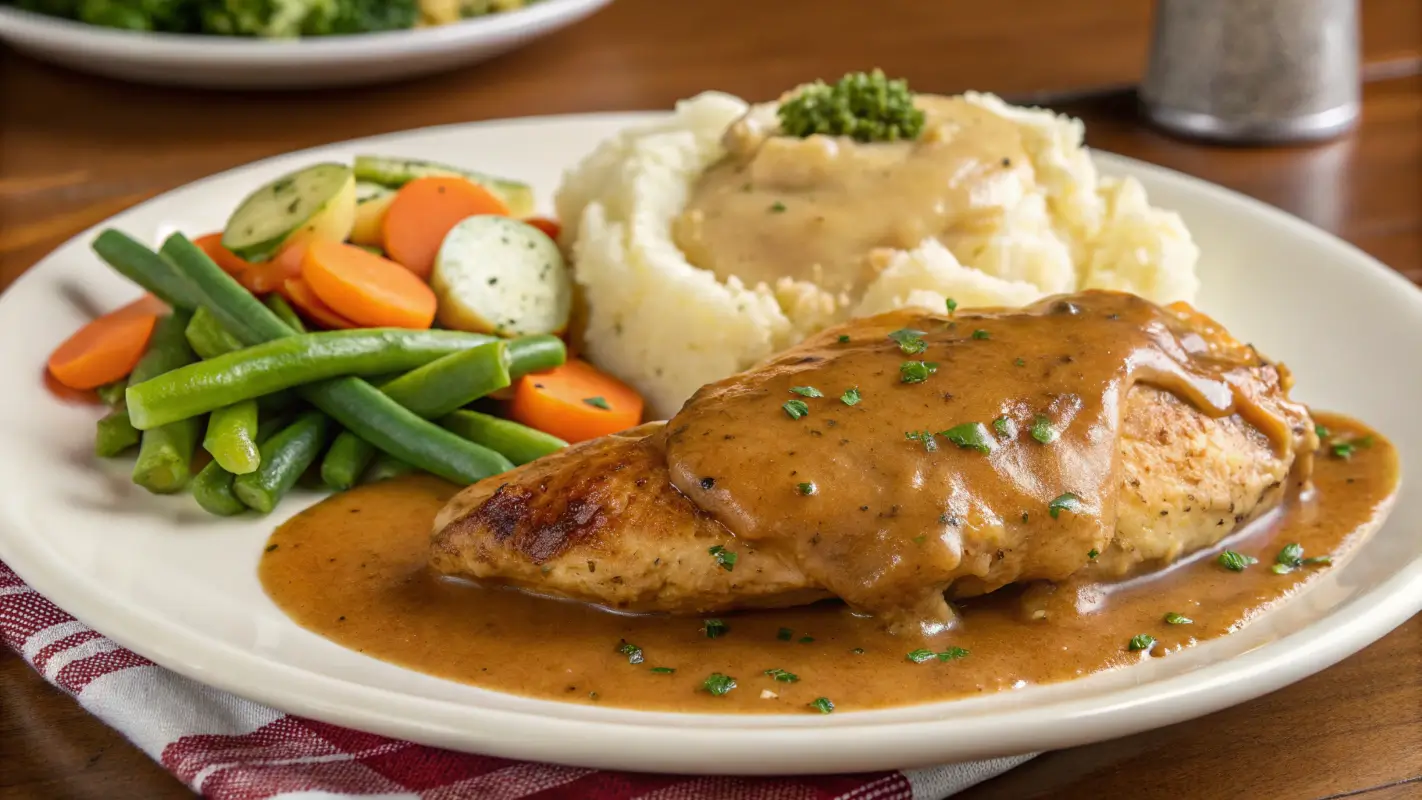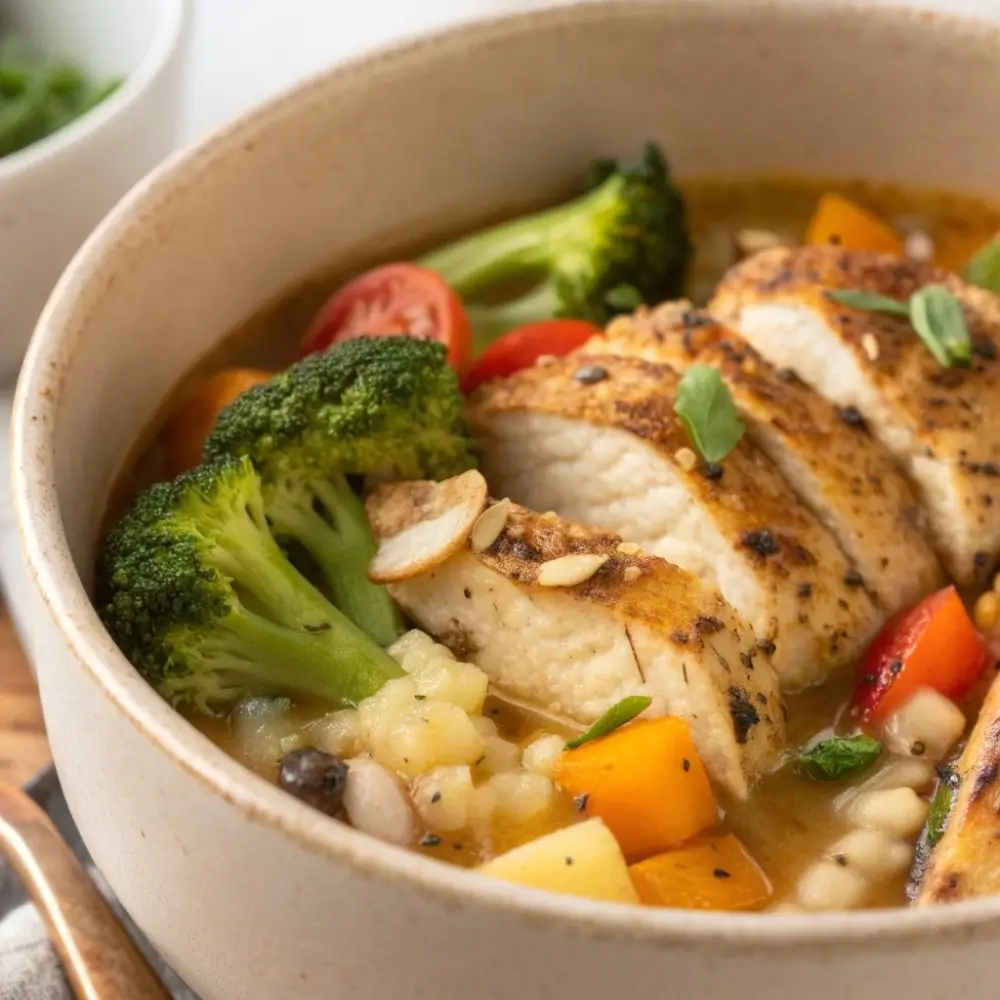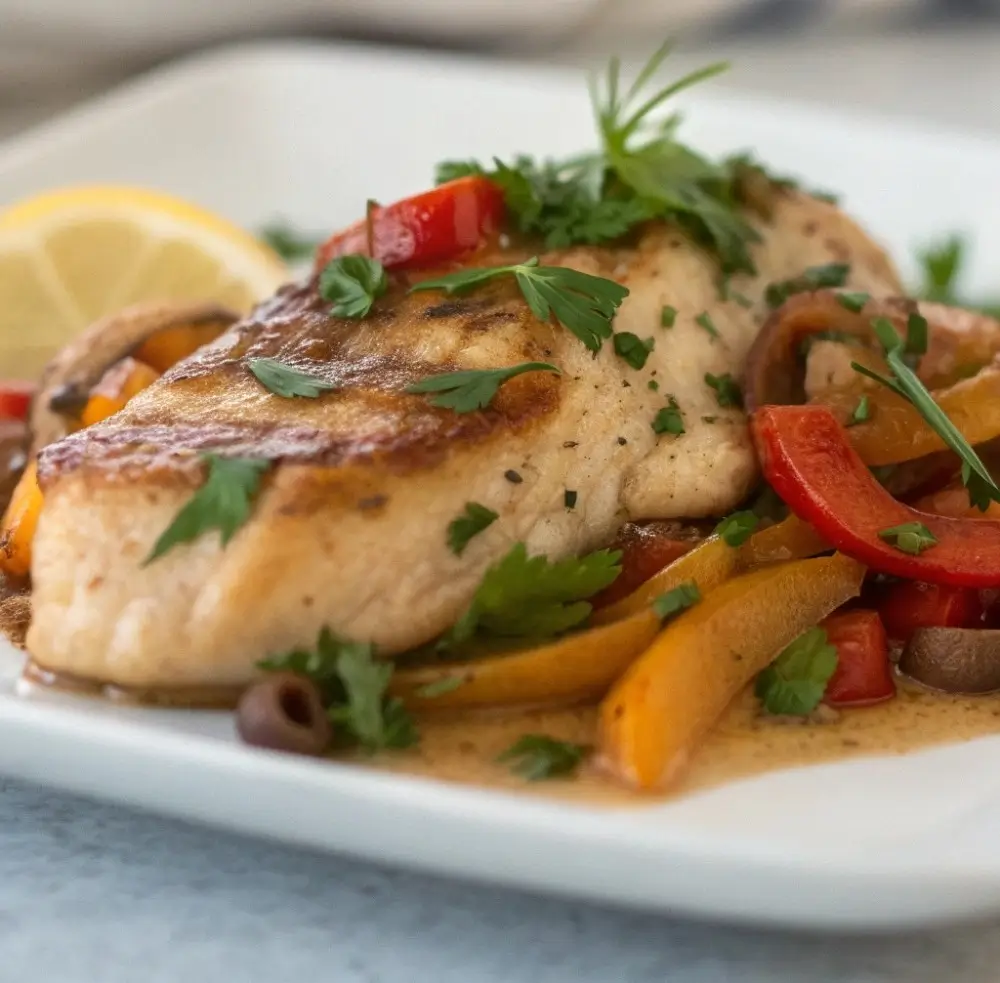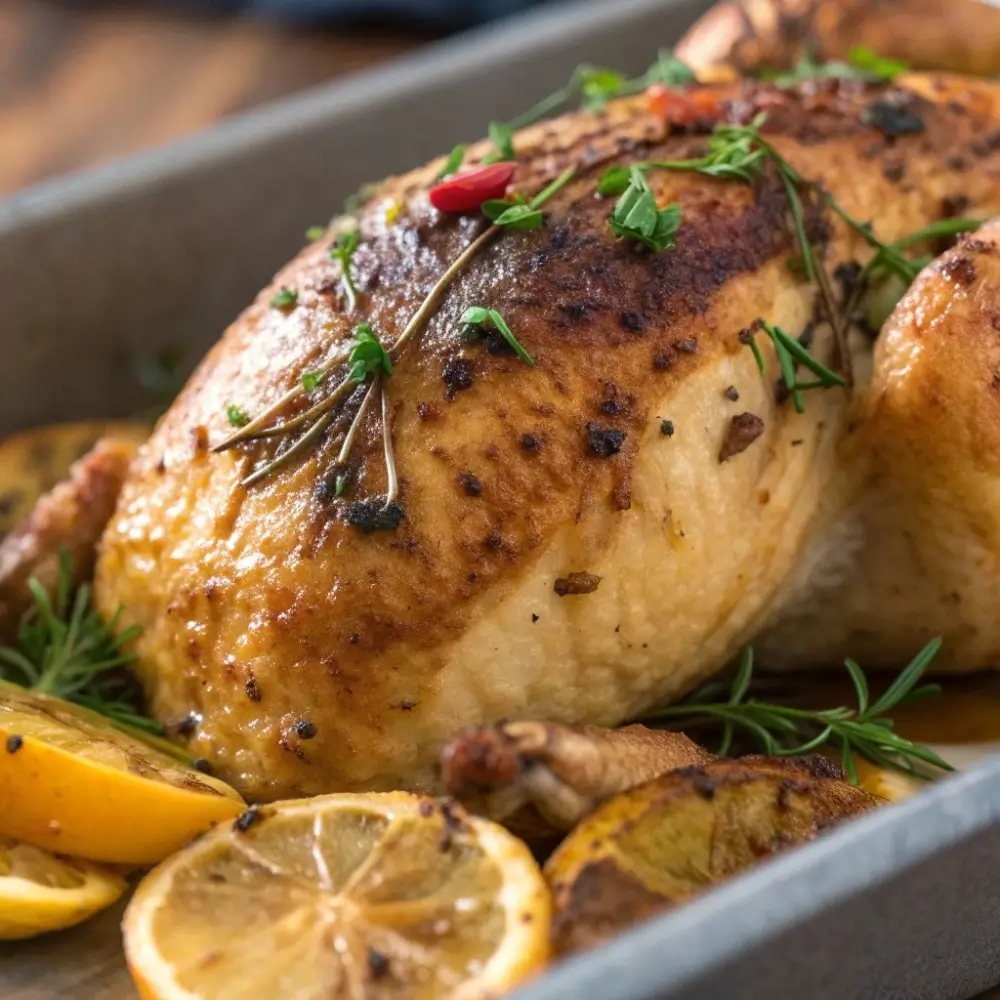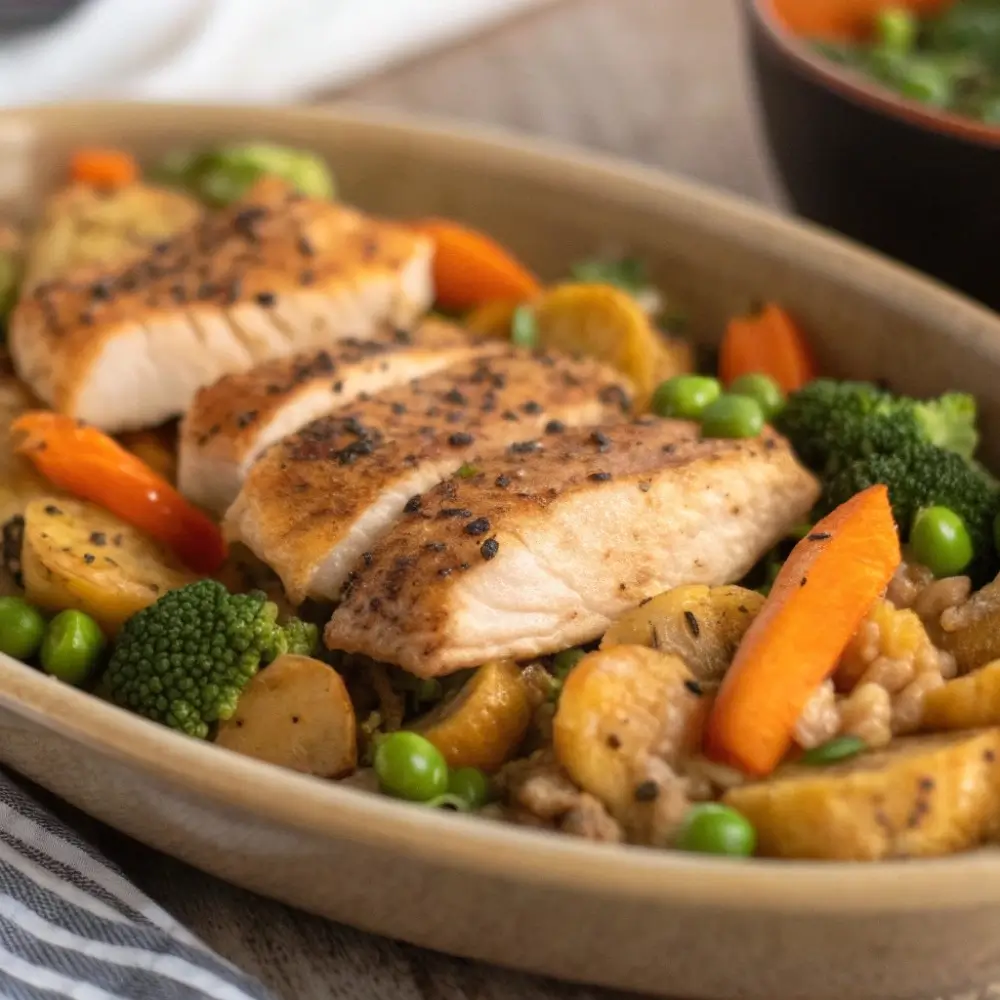Table of Contents
There’s something about a chicken and gravy recipe that just screams comfort. Whether you’re craving a warm, hearty meal after a long day or you’re preparing for a cozy family dinner, chicken and gravy never disappoint. This dish is a perfect combination of tender chicken, rich gravy, and flavors that meld together so beautifully, you’ll want to make it over and over again. From its humble origins to its place on dinner tables across the globe, chicken and gravy is a dish that truly stands the test of time. In this article, we’ll walk you through everything you need to know—from selecting the best chicken to crafting the perfect gravy. Plus, we’ll sprinkle in some delicious variations and serving suggestions to keep things interesting. Let’s dive in!
Understanding Chicken And Gravy Recipe
History and Origins
It’s hard to imagine a time when chicken and gravy wasn’t a beloved classic. The dish has its roots in simple, hearty meals—often considered comfort food. Historically, gravy was a way to use up leftover drippings from cooked meats, and it quickly became a flavorful complement to roasted chicken. Over time, the recipe has evolved and gained worldwide appeal, appearing in a variety of cultures and cuisines. Whether served in the U.S., the U.K., or beyond, chicken and gravy remains a symbol of hearty, satisfying home-cooked meals.
Many believe the American version of Chicken And Gravy Recipe came to life during the Great Depression, a time when home cooks relied on affordable ingredients to create filling dishes. Chicken, often seen as a cheaper protein, was paired with a rich, flavorful gravy to add depth and comfort to the meal. Today, it’s served as a staple in many households, often made with fresh, high-quality chicken and accompanied by mashed potatoes or rice.
Culinary Significance
What makes a chicken and gravy recipe stand out? It’s the simple, down-to-earth nature of the dish. While many meals require a bit of flair and sophistication, chicken and gravy delivers on comfort and satisfaction in a way that few dishes can. Its easy-to-make, no-fuss approach makes it perfect for busy families, while its timeless flavor brings a sense of nostalgia to every bite.
This dish is about more than just food—it’s about bringing people together. The chicken and gravy recipe is often seen at family gatherings, holiday dinners, and Sunday meals. There’s something undeniably inviting about the rich, savory aroma that fills the kitchen as the chicken cooks and the gravy thickens. It’s a meal that makes people feel at home, and for that reason alone, it will always hold a special place on our dinner tables.
Ingredients and Preparation of Chicken And Gravy Recipe
Selecting the Chicken
When it comes to creating the perfect chicken and gravy recipe, the chicken itself plays a crucial role. The right cut can make or break your dish. Let’s start with the basics—boneless chicken breasts or bone-in thighs are often the go-to choices. But did you know that each cut brings its own unique flavor and texture?
- Boneless Chicken Breasts are a popular option for quick, easy meals. They cook faster and provide a leaner option, making them ideal if you’re looking for something a bit healthier. However, they can dry out more easily, so careful attention to cooking time is essential.
- Bone-in Thighs are a favorite for those who enjoy juicy, tender meat with a rich, savory flavor. The bones and skin help retain moisture during cooking, resulting in a more flavorful dish overall. If you’re aiming for tenderness and maximum flavor, this is the way to go.
Don’t forget to opt for fresh, high-quality chicken whenever possible. Fresh, free-range chicken tends to be more flavorful than frozen options, though frozen chicken will work if you’re in a pinch.
Preparing the Gravy Base
Gravy can be a game-changer in any chicken and gravy recipe. It’s what turns a simple meal into something comforting and indulgent. The foundation of your gravy is a roux—a simple mixture of fat (usually butter) and flour. The key here is to get the right balance.
- Start with a roux: Melt butter in a pan over medium heat, then whisk in the flour. Keep stirring to avoid lumps, and cook the mixture for a couple of minutes until it turns a golden color. This step is crucial because it ensures the flour has cooked off any raw taste.
- Add your liquid: Gradually pour in chicken broth or stock, whisking constantly to combine the roux and the liquid into a smooth consistency. Chicken stock will add depth of flavor, while broth gives a lighter taste. If you want a richer gravy, you can also add a splash of cream or milk.
- Season to taste: The gravy should be perfectly seasoned with salt, pepper, and any herbs you desire. Thyme, rosemary, and garlic pair wonderfully with chicken. A little bit of soy sauce or Worcestershire sauce can also add a savory kick.
Be patient with this step—let your gravy simmer on low heat for about 10 minutes to thicken up and develop full flavor.
Discover the secret to making the perfect gravy in our guide on What is the secret to good gravy?
Combining Chicken and Gravy
Now that you’ve prepped your chicken and gravy, it’s time to bring everything together. Whether you’re searing the chicken or roasting it, the process is simple.
- Cook the chicken: If you’re using chicken breasts, pan-sear them in a hot skillet with a little olive oil. Cook them for 6-7 minutes per side or until they reach an internal temperature of 165°F. For bone-in thighs, bake them at 375°F for 35-40 minutes until the skin is crispy and the meat is juicy.
- Add the gravy: Once your chicken is cooked, pour your delicious, creamy gravy over the chicken. Allow it to simmer together for a couple of minutes, allowing the chicken to absorb some of that rich flavor.
Tip: If you want extra gravy, you can double the gravy recipe to ensure you have plenty to serve over mashed potatoes, rice, or veggies. Remember, the more gravy, the better!
Variations and Enhancements of Chicken And Gravy Recipe
Regional Variations
While chicken and gravy is a universal dish, many cultures put their own twist on the classic recipe. These variations offer a chance to get creative with your ingredients while still maintaining the heartiness of the dish.
- Southern Chicken And Gravy Recipe: In the South, chicken is often battered and fried, then smothered in a thick, peppery gravy. The chicken’s crispy exterior pairs beautifully with the creamy, seasoned gravy, making it a crowd-pleaser at any Southern dinner table.
- Chicken and Gravy with Mushrooms: In French and European cuisine, you might find chicken served with a savory mushroom gravy. The earthiness of the mushrooms adds a rich layer of flavor that complements the tender chicken.
- Asian-Style Chicken and Gravy: For an Asian-inspired twist, you can add soy sauce, ginger, and garlic to your gravy base. This creates a more savory, umami-rich gravy that pairs perfectly with steamed jasmine rice.
By switching up the gravy’s base or cooking method, you can easily introduce new flavors while keeping the dish grounded in the comforting essence of the original recipe.
Flavor Enhancements
There’s no need to stick to the basics when it comes to Chicken And Gravy Recipe. With a little imagination, you can elevate this dish into something truly special.
- Herbs and Spices: Fresh thyme, rosemary, or sage can be added to the gravy for a fragrant, herbal kick. If you prefer something a little spicier, toss in a dash of cayenne or red pepper flakes for heat.
- Caramelized Onions: Add depth to your gravy by caramelizing onions before adding them to the sauce. This will bring a subtle sweetness and richness that will elevate the dish.
- Creamy Additions: For an extra indulgent gravy, you can stir in a little heavy cream or sour cream toward the end of cooking. This will create a velvety, smooth gravy that clings to the chicken beautifully.
These small tweaks can make your chicken and gravy recipe truly unforgettable.
Dietary Modifications
If you’re catering to specific dietary needs, chicken and gravy is a versatile dish that can be easily modified. Here are some ideas for adapting the recipe to meet various dietary preferences:
- Gluten-Free Gravy: Swap out the regular flour in your roux for gluten-free flour or cornstarch. Both options will create a thick, rich gravy without the gluten.
- Dairy-Free Version: Use dairy-free butter and coconut milk instead of cream. This will create a smooth, dairy-free gravy that’s still creamy and delicious.
- Low-Sodium Chicken Gravy: Opt for low-sodium chicken broth and skip the added salt. You can always enhance the flavor with herbs and a dash of lemon juice for a bit of tang.
By making these simple swaps, you can ensure that your chicken and gravy recipe fits a variety of dietary needs.
Serving Suggestions
Traditional Accompaniments
What’s better than a plate of perfectly cooked chicken and gravy? A well-thought-out side dish to complement it, of course! Classic accompaniments like mashed potatoes, rice, and steamed vegetables are always a hit.
- Mashed Potatoes: The creamy, buttery texture of mashed potatoes soaks up the gravy beautifully, making them a timeless pairing with chicken. For added flavor, you can mix in some roasted garlic or chives.
- Rice: Whether you prefer white rice, brown rice, or even a wild rice blend, it provides a wonderful base for the savory chicken and gravy to rest upon.
- Steamed Vegetables: For a lighter option, serve your chicken with steamed vegetables like green beans, carrots, or broccoli. They add a fresh contrast to the rich, creamy gravy.
Creative Pairings
While mashed potatoes and rice are classic choices, you can get creative with your side dishes to add more variety.
- Biscuits: Fluffy, buttery biscuits are perfect for sopping up that rich gravy. You can even make them from scratch for an extra special touch.
- Crispy Roasted Potatoes: Roasted baby potatoes with a crispy exterior and tender inside make a delicious side that contrasts nicely with the creamy gravy.
- Side Salad: If you’re looking for something lighter, a refreshing side salad with mixed greens, cucumber, and a tangy vinaigrette can balance out the richness of the dish.
The possibilities are endless when it comes to chicken and gravy recipe pairings, so feel free to get creative!
Cooking Tips and Troubleshooting of Chicken And Gravy Recipe
How to Keep Chicken Moist
One of the key components of a delicious chicken and gravy recipe is the chicken itself. If your chicken comes out dry, it can detract from the richness of the gravy. Here are a few simple tips to ensure your chicken stays juicy and tender:
- Don’t Overcook the Chicken: Whether you’re pan-searing, baking, or grilling, always keep an eye on your cooking time. Use a meat thermometer to make sure your chicken reaches an internal temperature of 165°F. Overcooking can dry out the meat, so take it off the heat once it’s fully cooked.
- Use Bone-in Cuts: As mentioned earlier, bone-in chicken thighs are incredibly juicy. The bones help retain moisture, so the chicken stays moist even after cooking. For a tender and juicy result, consider using this cut instead of boneless breasts.
- Let the Chicken Rest: Once you remove your chicken from the pan or oven, let it rest for 5-10 minutes before serving. This allows the juices to redistribute throughout the meat, keeping it moist.
- Baste the Chicken: If you’re roasting your chicken, baste it with its own juices every 20-30 minutes. This will help keep the meat from drying out and infuse it with extra flavor.
Common Gravy Mistakes and How to Fix Them
Making the perfect gravy can sometimes be tricky. Whether it’s too thick, too thin, or lumpy, there are a few common mistakes that can happen when making gravy. Fortunately, each problem has a quick fix.
- Gravy is Too Thick: Sometimes, the gravy thickens too much while it’s simmering. If this happens, simply add a little more liquid (chicken broth or water) to loosen it up. Stir constantly as you add the liquid until it reaches your desired consistency.
- Gravy is Too Thin: If your gravy is too thin and doesn’t coat the chicken, don’t worry! You can easily fix this by making a slurry—mix a tablespoon of cornstarch with a bit of cold water, and whisk it into the gravy. Let it simmer for a few minutes until it thickens up.
- Lumpy Gravy: Lumpy gravy is a common issue, especially when you’re adding flour to the liquid. To prevent lumps, be sure to whisk the roux and broth together slowly, allowing the mixture to smooth out. If lumps do form, use a hand blender or regular blender to smooth them out. Alternatively, you can strain the gravy to remove any remaining lumps.
- Gravy Lacks Flavor: If your gravy is bland, try adding extra seasoning. A pinch of salt, pepper, and herbs like thyme, rosemary, or sage can elevate the flavor. For a little extra umami, a splash of soy sauce or Worcestershire sauce can make a big difference.
By following these tips, you’ll be able to fix any gravy issues and make sure your chicken and gravy recipe turns out perfectly every time.
Frequently Asked Questions
Can I make Chicken And Gravy Recipe ahead of time?
Yes! You can definitely make chicken and gravy ahead of time. In fact, the flavors often get even better when they have time to sit. Here’s how:
- Cook the chicken and gravy separately: You can cook the chicken and gravy in advance and store them in airtight containers in the fridge for up to 3 days. When you’re ready to serve, simply reheat them on the stove. You might need to add a little extra broth or water to the gravy as it heats up.
- Freeze for later: If you want to store it longer, both chicken and gravy freeze well. Just make sure to let them cool completely before freezing. When reheating, gently warm the chicken and gravy on the stove, adding more liquid as needed.
This makes chicken and gravy a great option for meal prep or busy weeknights when you don’t have much time to cook.
What sides go best with chicken and gravy?
While chicken and gravy is a star dish on its own, pairing it with the right sides can elevate the meal to another level. Here are some of the best options:
- Mashed Potatoes: Soft and creamy mashed potatoes are the ultimate companion to chicken and gravy. The potatoes soak up the savory gravy, making for a perfect bite every time.
- Rice: Whether it’s white rice, brown rice, or a grain medley, rice provides a great base for the gravy to settle on.
- Steamed Vegetables: Fresh steamed veggies like green beans, broccoli, or carrots provide a nice balance to the rich, creamy gravy.
- Biscuits or Rolls: Fluffy biscuits or soft dinner rolls are perfect for sopping up extra gravy, adding a touch of comfort to the meal.
Feel free to mix and match your sides, but these are the tried-and-true favorites that pair beautifully with chicken and gravy.
Can I use chicken breasts instead of thighs for this recipe?
Absolutely! You can use chicken breasts instead of thighs in your chicken and gravy recipe. However, keep in mind that chicken breasts tend to dry out more easily. To prevent this, consider using bone-in, skin-on chicken breasts or making sure you don’t overcook them. Chicken thighs are typically more forgiving when it comes to retaining moisture, but breasts will work fine with careful cooking!
Explore a variety of delicious and nutritious options with these 76 Healthy Chicken Recipes for every meal.
Conclusion
From its humble beginnings to its place on dinner tables worldwide, the chicken and gravy recipe has evolved into a comfort food that never goes out of style. Whether you prefer boneless chicken breasts, juicy bone-in thighs, or even a fried version, the essence of this dish is all about bringing family and friends together with a hearty, satisfying meal. The key to success lies in getting the right balance between tender chicken and flavorful, smooth gravy—along with the right sides to round out your plate.
So next time you’re in the mood for something filling, hearty, and downright comforting, you know exactly what to make. With these tips, variations, and cooking advice, your chicken and gravy recipe is sure to become a favorite in your household. Happy cooking!
